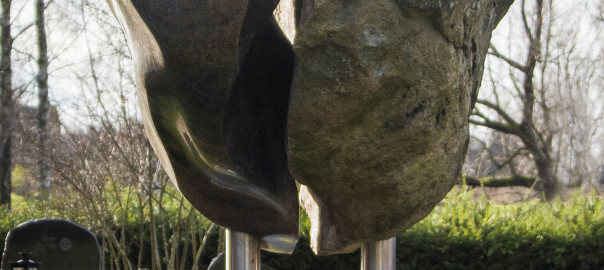
Memorial site for Latvian singer Mārtiņš Freimanis
The musician, poet and actor Mārtiņš Freimanis (1977-2011) was born and raised in Aizpute where he also attended Aizpute secondary school. M. Freimanis was buried in Misiņkalns cemetery in Aizpute. The sculptor Uldis Zariņš is the author of the memorial stone.
Address: Brīvības iela, Aizpute
More information: vardnica.aizpute.lv
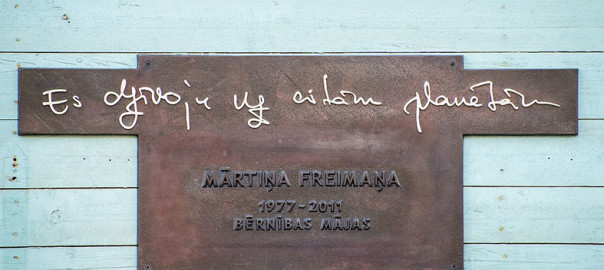
Memorial plate of Latvian singer Mārtiņš Freimanis` childhood house
In 2014 at the International Cast Iron Symposium, the sculptor Kārlis Alainis created and cast a memorial plate for the famous late Latvian musician.
Address: Kalvenes iela 30, Aizpute
More information: vardnica.aizpute.lv
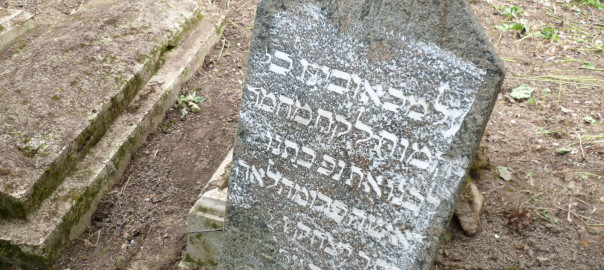
Jewish Cemetery
The cemetery was founded in the late 18th century, and it still has the largest part of the gravestones. Some of them are truly unique: they are made of cast iron and have Hebrew letter-shaped inscriptions in German.
Address: Kalvenes iela (at the end of the Kalvene street, before the Aizpute border)
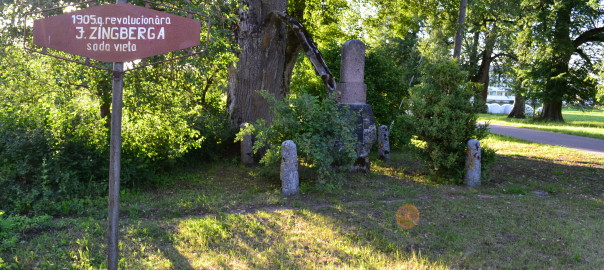
Monument of Juris Zinbergs
The monument to the teacher and one of the main organisers of the unrest in 1905 – the revolutionary Juris Zinbergs – was unveiled in 1926, at the place of his death, on one side of the road to Rokaiži Manor.
Address: Rokaiži, Kazdangas pagasts
More information: vardnica.aizpute.lv
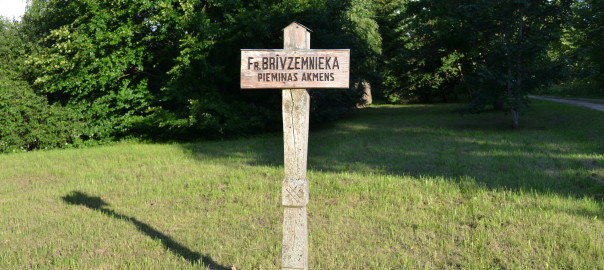
Fricis Brīvzemnieks` memorial stone
Opposite the execution place of the national revolutionary J. Zinbergs, there was a pub building – the birth place in 1846 of folklorist Fricis Brīvzemnieks (Treilands). His father was a saddler who rented the Rokaiži pub temporarily from the Baron. The memorial stone to the poet and folklorist Fricis Brīvzemnieks (1846-1907) was unveiled in 1982.
Address: Rokaiži, Kazdangas pagasts
More information: vardnica.aizpute.lv
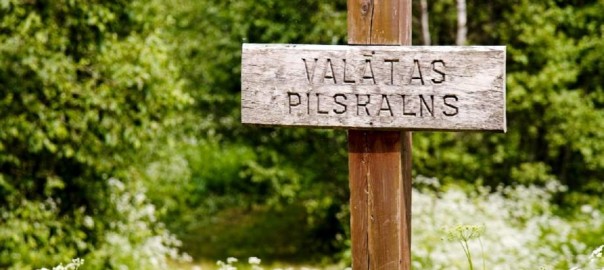
Valātas castle mound
3 km from the center of Kazdanga between Vecpilis and Valāti is the Valata castle mound. In terms of area, one of the largest castle mounds in Course. Naturally protected from three sides, but on the north side there are two banks of earth and two ditches. Behind the ditches there used to be an old city which was several hectares big. Castle mound is one of the most beautiful in Kurzeme. There`s an outlined guess, that on the castle mound was located the Lažas castle,which was mentioned in the Rhymes Chronicle, and it was burned down in 1263 by Germans.
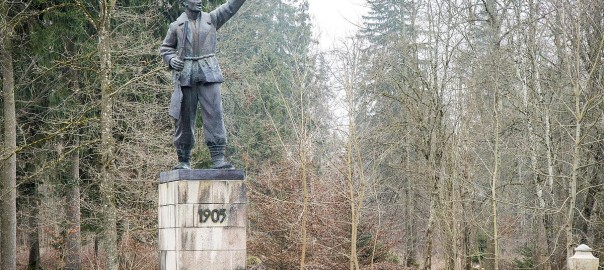
Monument to the Revolutionaries of 1905
Almost 100 fighters perished here in 1905. They had been surrounded on three sides when the baron and Russian army fired at them. The events of 16 December 1905 in Aizpute are commemorated with the stone monument in Rokasbirze, and it has the flag of Latvia and the names of the victims engraved on it. Nearby is another monument of a height of several meters
Address: Rokasbirze, Aizputes pagasts
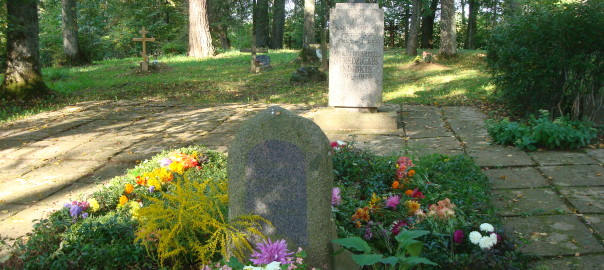
Neredzīgais Indriķis (“Blind Indriķis”) memorial
A couple of kilometres away from Apriķi, towards Aizpute, there is the Ģiborti cemetry where the Latvian peasant-poet and song-writer Neredzīgais Indriķis (“Blind Indriķis”, 1783-1828) is buried. Altought Indriķis was iliterate and lost his eyesight at early age of 5, he was inspired by church songs of G.F.Stender. He was the first Latvian whose collection of poems was published for the public in 1806.
Address: Ģibortu kapi, Lažas pagasts
More information: vardnica.aizpute.lv
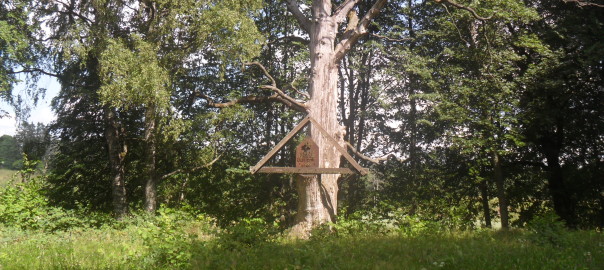
Dzintare Hillfort
In Rhytm Chronicle is told about fight of German crusaders, who have attacked army of Curonian and Lithuanian tribes settled in Dzintare Hillfort in 1261. The moat of the fortress was filled with fire-wood and burned. The attackers killed all of its defenders, including boys older than eleven years old and women who didn’t want to beg for their lifes. Dzintare Hillfort is located on the bank of the Tebra River, at the outfall of the Grapste River in Tebra, near the Aizpute-Apriķi-Pāvilosta road.